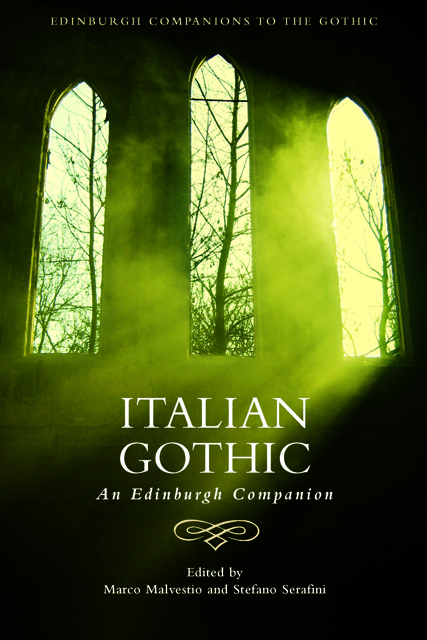12 - The Gothic Body
Published online by Cambridge University Press: 20 October 2023
Summary
The resonance of the Gothic genre in Italy can be noted most strongly within the literary production of certain fin-de-siècle writers, particularly those active within the Scapigliatura and naturalist movements, who were especially receptive to literary influences from beyond national borders. The adoption of Gothic elements such as the supernatural, mystery, decay, madness and death went hand-in-hand with the exploration of female malady and deformities in the works of writers such as Igino Ugo Tarchetti, Luigi Capuana, Antonio Fogazzaro and Matilde Serao. These authors’ portrayal of femininity, in a period characterised by derogatory and paradoxical theories about women's nature, interweaves themes of contaminated beauty, illness and madness with plot structures that combine romance, mystery, suffering, alienation and sometimes death. A focus on the female condition within the Gothic tradition features early in the genre's origins, as Ellen Moers notes in the chapter ‘Female Gothic’ of Literary Women: The Great Writers: ‘as early as the 1790s, Ann Radcliffe firmly set the Gothic in one of the ways it would go ever after: a novel in which the central figure is a young woman who is simultaneously persecuted victim and courageous heroine’ (91). In this essay I examine those novels in the fin-de-siècle Italian context, specifically Tarchetti's Fosca (1869), Fogazzaro's Malombra (1881), Capuana's Profumo (1892) and Serao's La mano tagliata (1912), which utilise the suffering female body as a means of exploring female oppression within society. The heroines of these novels demonstrate characteristics of vulnerability, expressed through illness and madness, but also strength of character in their attempts to control their fates and escape their oppressive surroundings. The focus on the female body and its physical and mental deformities, central to these authors’ portrayal, points to the female characters’ struggle to overcome situations which posit them as victims of suffering, persecution and oppression. In their rebellion against society's restrictions, often embodied by a male aggressor, the female protagonists transgress traditional norms for female passivity and their mental and physical illness represents the manifestation of their deviance.
It is important to note that few Italian fin-de-siècle women writers adopt the Gothic tradition in their portrayal of female realities, privileg-ing instead domestic realism as a means of portraying and denouncing women's limited options outside the domestic realm (Mitchell).
- Type
- Chapter
- Information
- Italian GothicAn Edinburgh Companion, pp. 185 - 196Publisher: Edinburgh University PressPrint publication year: 2023



